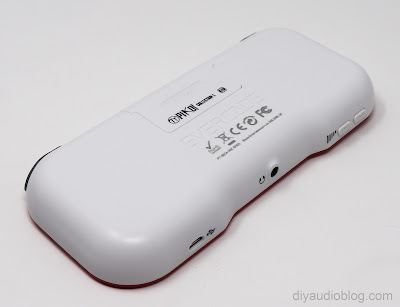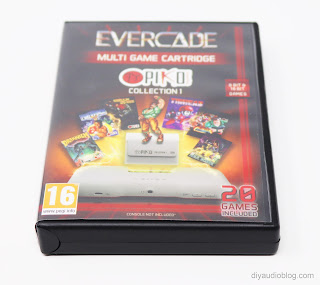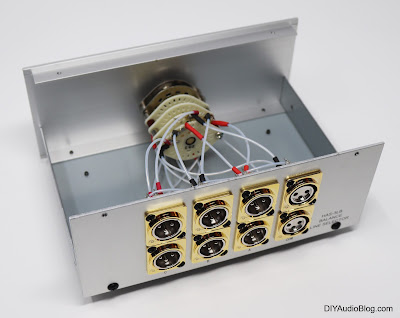I've been waiting for the Evercade for quite a while and it's FINALLY here!
It's pretty darn close to what I expected. The Evercade is a value-oriented product, so there are a number of compromises necessary to hit that low-cost sweet-spot. What really matters though is if it scratches that nostalgic itch and does a decent job of presenting the games, especially to those who may have never played them before. Get a low-down below of where Evercade really hits the mark and where it falls a little short:
 |
| The Evercade console in white |
What's great:
- Huge selection of cartridges right out the door (10 available, 4 coming in Q3)
- The console has a decent weight to it and the build quality is solid. There’s no quality concerns like with generic consoles from China like the SupaBoy (e.g. hair or dirt behind screen, smudges in finish, etc.)
- The buttons have a great feel and response. The response similar to an Xbox controller, which is high praise.
- The L+R buttons have a little less weight but make a satisfying clicky sound
- The cartridges are a good size, maybe around the size of a Game Gear game (not tiny and easy to lose like the Switch)
- Easy-to-access menu during gameplay
- Nice looking, quality boxes for the cartridges and color manuals
- Rechargeable battery
- HDMI output
- Low priced games and system. The system is about $100 with three cartridges, and the cartridges are $20 each. The system with all ten games is $200.
 |
| Love the cartridge cases! |
What could be better:
- Cartridge fit is fairly tight… not on the contacts, but the left and right sides are lacking adequate clearance.
- D-pad feels a little mushy, about what you’d expect from a 3rd party value controller
- Screen angle viewing isn’t great, but you’re going to be head on playing this thing so not a big deal
- Screen could be a little larger
- There seems to be only one save state per cartridge, vs. one per game
- Sound quality isn’t the greatest. Granted these are 8 and 16 bit tunes, but they can still sound better with a little more wattage and a larger driver.
- A number of the games are two-player, but I don’t think there’s a way to link up two of these puppies.
 |
| That cartridge fit is tight! |
Overall I think the Evercade is a really nice gesture to the retro
gaming community. It’s a solid product with a price-point that’s accessible to many
and already has great support from developers. The whole premise reminds me a
bit of the NEO GEO X Gold, which was a nostalgic system released mostly for
collectors where games were sold separately via cartridge. While I love SNK and
the Neo Geo, I think the Evercade has more going for it than the X Gold with access to a variety of publishers.
The real litmus test is in the games, and Evercade already has 10 titles available at launch (very impressive) and 4 more which will be releasing in Q3. Not only are there classic games, but new titles like Xeno Crisis and Tanglewood are being released. I’d really like to see it succeed so we can have even more newly released games and more classic collections to check out. I think the unit’s success in the market will be dependent on gaining more buy-in from devs so there are more carts available to consumers.
 |
| The storage case is a nice option |
What could Evercade do to make a very solid release even
better?
- Allow a save state for each game and enable two player via a firmware update.
- Offer a premium stand-alone console later down the line that addresses the compromises (screen, d-pad, speakers, maybe include a bigger battery) and sell for $199-$249. Collectors aren’t as price sensitive as normal consumers.
Currently available cartridges
- Atari Collection 1 (with 20 games)
- Namco Museum 1 (with 11 games)
- Data East Collection 1 (with 10 games)
- Interplay Collection 1 (with 6 games)
- Atari Collection 2 (with 20 games)
- Namco Museum 2 (with 11 games)
- Interplay Collection 2 (with 6 games)
- Mega Cat Studios Collection 1 (with 10 games)
- Piko Interactive Collection 1 (with 20 games)
- Technos Collection 1 (with 8 games)








